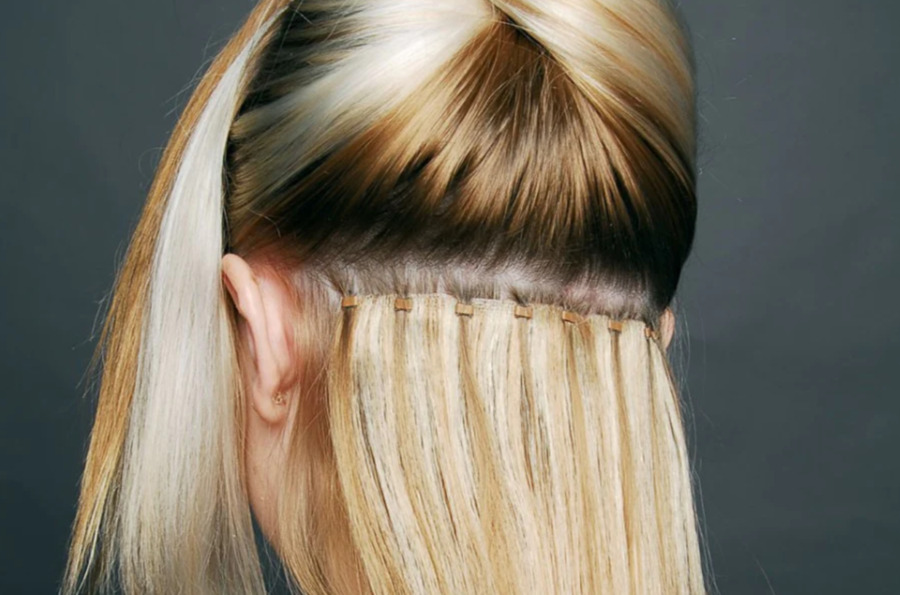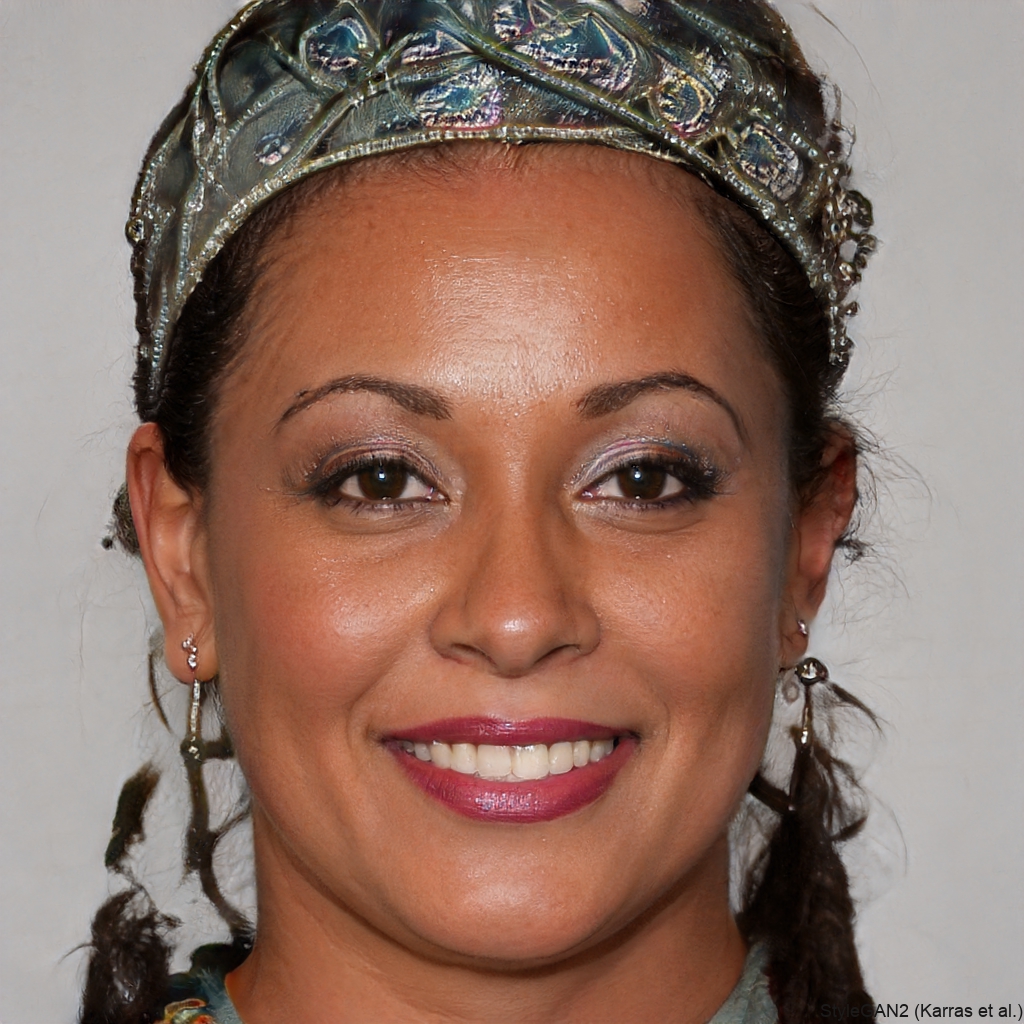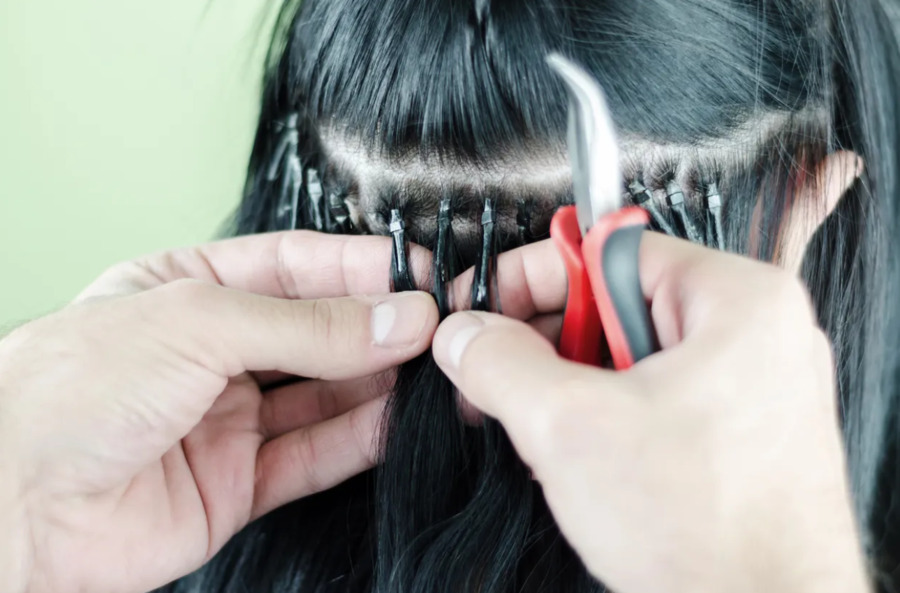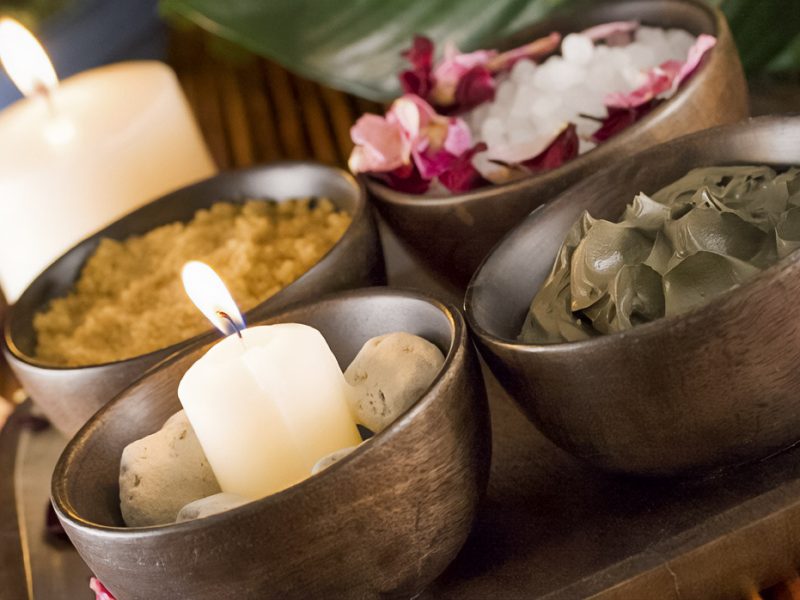For centuries, long, voluminous hair has been a symbol of beauty and allure. In contemporary beauty standards, lush locks continue to be a coveted attribute for many, prompting the widespread use of hair extensions as a transformative beauty solution. This detailed guide will delve deeper into various types of hair extensions, exploring their origins, application methods, wear periods, benefits, and drawbacks, with an emphasis on how to maintain them. We’ll also highlight specialized services available in Dubai, specifically at shakirovna.com
What Are Hair Extensions?
Hair extensions are additional strands of real or synthetic hair that are affixed to one’s natural hair to enhance its length, volume, texture, or color. They can dramatically change one’s appearance and are used for a variety of purposes, from everyday hairstyling to special occasions.

Types of Hair Extensions and Their Techniques
- Hollywood Hair Extensions (Extensions on Tresses)
Origin: These extensions gained prominence in Hollywood, where celebrities frequently altered their looks for different roles and public appearances.
Procedure: This method involves attaching wefts or tresses of hair to natural hair using clips, glue, or by sewing into braided tracks.
Wear Period: Typically lasts for 6-8 weeks, depending on the care and method used.
Advantages: Allows for quick, dramatic changes in hairstyle.
Disadvantages: Potential damage to natural hair from the weight and tension of the extensions.
- Spanish Technology
Origin: Developed in Spain, this technique is known for its gentle approach to hair extension.
Procedure: Hair is integrated using micro-rings or loops that hold the extensions without the use of heat or adhesives.
Wear Period: Can last up to 12 weeks with proper maintenance.
Advantages: Less damaging to the natural hair; extensions can be easily adjusted as needed.
Disadvantages: Micro-links might slip if not installed or maintained correctly.
- Capsule Extensions
Origin: These originated from European techniques that focus on blending the extensions seamlessly with natural hair.
Procedure: Small capsules, typically made of keratin, are bonded to the natural hair using a heating element.
Wear Period: Generally lasts between 3-4 months.
Advantages: They are durable and provide a natural look.
Disadvantages: The heat required to attach the extensions can potentially damage natural hair.
Origin: An advanced version of capsule extensions, offering a more discrete attachment.
Procedure: Uses smaller bonds than standard capsule methods to affix the hair extensions.
Wear Period: Similar to standard capsule extensions, around 3-4 months.
Advantages: The smaller bonds are less visible and blend better with natural hair.
Disadvantages: Application and maintenance can be more intricate and time-consuming.
- Bio Hair Extensions
Origin: Developed as an environmentally friendly alternative to traditional methods.
Procedure: Uses organic, biodegradable bonds that minimize scalp irritation and hair damage.
Wear Period: Typically 4-6 months.
Advantages: Eco-friendly and gentle on the hair and scalp.
Disadvantages: Costs can be higher due to the organic materials used.
- Ribbon Extensions
Origin: These became popular in the United States for their ease of application.
Procedure: Strips of hair are attached close to the scalp using double-sided tape.
Wear Period: Needs reapplication every 4-8 weeks.
Advantages: Quick to apply and relatively flat against the scalp, making them less noticeable.
Disadvantages: The adhesive can wear out, requiring frequent maintenance.
- Keratin Extensions
Origin: Utilizes keratin, a protein naturally found in hair, to create a seamless bond.
Procedure: Extensions are fused to natural hair using a keratin-based adhesive that is activated by heat.
Wear Period: Up to 5 months, depending on hair growth and care.
Advantages: Offers a strong hold and a very natural appearance.
Disadvantages: Application involves heat, which can damage the hair if not done correctly.
- Brazilian Extensions
Origin: Known for their robust texture and volume, these extensions cater to those seeking a fuller look.
Procedure: Typically applied as sew-ins or with beads that do not require adhesives.
Wear Period: Generally maintained every 2-3 months.
Advantages: Provides significant volume and body.
Disadvantages: The weight of these extensions can strain the scalp and natural hair.
- Ultrasonic Hair Extension
Origin: Incorporates the latest technology in hair extensions.
Procedure: Uses ultrasonic waves to bond hair extensions to natural hair without heat.
Wear Period: Lasts about 3-4 months.
Advantages: Reduces the risk of heat damage to natural hair.
Disadvantages: The initial cost and upkeep can be expensive due to the advanced technology involved.

Hair Care After Hair Extensions
Maintaining hair extensions is crucial for preserving the health of your natural hair and ensuring the longevity of the extensions:
Washing: Use gentle, sulfate-free shampoos and condition carefully, avoiding the bonds.
Brushing: Start from the ends and work your way up to detangle gently, using a soft bristle brush.
Styling: Minimize the use of heat-styling tools; when necessary, use a heat protectant.
Sleeping: Tie hair back in a loose braid or ponytail to prevent tangling and matting overnight.
Hair Extensions in Dubai
For those in Dubai, SHAKIROVNA BEAUTY CENTER offers top-tier hair extension services, including keratin capsule hair extensions for 10 AED per capsule. Known for its professional staff and high-quality service, the center provides expert application and advice, ensuring clients achieve their desired looks with confidence.
Hair extensions are an excellent option for anyone looking to enhance their appearance. By understanding the various types and proper care methods, you can enjoy the transformative effects of extensions and maintain the health and beauty of your natural hair.

Baseball fan, mother of 2, DJ, vintage furniture lover and creative consultant. Making at the intersection of art and programing to craft experiences both online and in real life. I’m a designer and this is my work.


